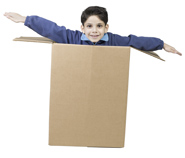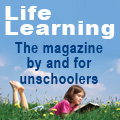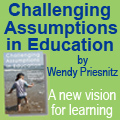Play is Self-Directed Learning
by Marty Layne
 A few years ago I helped a ten-year-old boy at the beach build a dam across a little stream. I was helping my teacher husband with a class field trip. At the end of each school year, he takes his class to the beach. This particular year, the lake he usually goes to had a lot of algae so instead of going there, he took his class to a beach by the ocean. We live in Victoria, B.C. While the air gets warm, the Pacific Ocean never gets much warmer than about 12 or 13 ° C in the summer. So instead of swimming, the children often build sandcastles or climb around on and/or build things with the logs that have been washed ashore. A few years ago I helped a ten-year-old boy at the beach build a dam across a little stream. I was helping my teacher husband with a class field trip. At the end of each school year, he takes his class to the beach. This particular year, the lake he usually goes to had a lot of algae so instead of going there, he took his class to a beach by the ocean. We live in Victoria, B.C. While the air gets warm, the Pacific Ocean never gets much warmer than about 12 or 13 ° C in the summer. So instead of swimming, the children often build sandcastles or climb around on and/or build things with the logs that have been washed ashore.
One of the boys wanted to build a dam across a stream quite a way down the beach from where the group was. He needed an adult to go with him, so I volunteered. I found it fascinating to be with this child as he built his dam. He had lived in Victoria for most of his childhood. One of the best things about Victoria is that there are many accessible beaches that have lots and lots of driftwood. I watched as Hayden (not his real name) carried various pieces of wood to his dam location and started building. I asked if he wanted help to carry more driftwood. He said sure. Soon we exhausted the supply that was light enough for us to lift.
Hayden then decided that he needed a bigger log. He tried to move a log that was almost two meters long and 16 or 17 cm across. He tried tugging at it. He tried pushing it from one side. He tried pushing it from the ends but it was too heavy for him to move. I offered to help, but he wanted to work on his own. After 10 minutes, I offered to help again. He accepted my help then and I suggested that he use a long, thin log nearby to put underneath the bigger log to pry it up and move it that way. He thought this was a great idea and soon he was using the pole as a lever. It took him a while to get the hang of it, but he kept trying and soon began to figure out how the pole could help him move the bigger log to where he wanted it to go.
I was pleased for him that he had time to explore the possibilities of a lever. At the same time that I was pleased, I was sad. Here was a child who had not had the chance to spend enough time just poking around on the beach to discover that you can use one log to pry up another one. It made me think about how many times I was asked how my children could possibly be learning anything if they were just playing all the time.
This experience on the beach epitomized for me why children need to have time to play in unstructured ways. It helped to validate that self-directed play is a vital component of learning. Children need to explore the world and experiment to really begin to understand how things work. They need many experiences of rolling down a hill, rolling a ball down a hill, watching water from a hose run down a hill, seeing streams run down hill, etc. to grasp what gravity means. It is from experience that we build understanding and knowledge.
Current learning theory states that learning is:
- a process of knowledge construction, not of knowledge recording or absorption;
- knowledge dependent, as people use their existing knowledge to construct new knowledge;
- affected as much by motivational issues as by cognitive ones;
- highly tuned to the situation in which it takes place.
Let me illustrate how this theory works during play. Recently I watched an 18-month-old play with Play-doh. Sara wanted her mother to make a Play-doh snake come out of an extruder. She had had enough experiences with this toy to know that it makes snakes out of Play-doh. Her mom showed Sara where to put the Play-doh and demonstrated how to push it in. Her daughter put the Play-doh in where her mom had shown her and then tried to put the Play-doh in the place where she knew it would come out. Her mom showed her again where it needed to go in.
Mom then pushed down and the Play-doh came out in a snake form while Sara watched. Then they went through the whole procedure again and again and again. Sara continued to try to put the Play-doh in the place where it would come out as well as the correct spot. She played with Play-doh for about 45 minutes, continuing this process with her mom helping her while her mom and I were talking.
As I watched this little girl try to put the Play-doh in the place where it came out, it was clear to me that she had experienced other situations where when something comes out, it also goes back into that same place so that it can come out again (learning – a process of knowledge construction). This toy had a different way for things to come out. The Play-doh had to go in one place for it to come out another place. It may take many more times before Sara learns the concept that while the Play-doh comes out of one part it is not where it goes in. She has to build new knowledge based on her other knowledge. (Learning is knowledge dependent; people use their existing knowledge to construct new knowledge.)
She will continue to try to put the Play-doh in the place where it comes out until her new learning fits on top of her old learning. Her mom will probably show and tell her each time where the Play-doh goes because that is what we do with toddlers, we give them words and demonstrate how something works. But until Sara has learned for herself, she will continue to try to put the Play-doh in at the place that makes the most sense to her based on her previous understanding of how things work. The Play-doh extruder works differently and she will need many experiences before this makes sense to her.
Children learn about arithmetic in much the same way – with hands-on experience of objects like dolls or rocks or Lego pieces as they play. Parents give a child words and concepts, but it is the manipulating, the sorting and tactile experiences that make sense of number concepts. Until a child has his or her own understanding of these number concepts, has built this knowledge internally and understands it, arithmetic problems may feel like Sara did when she was trying to figure out why the Play-doh didn’t go back in where it came out. Until a child has had many experiences with quantities of items and manipulated them, the process of addition, subtraction, multiplication can look as mysterious to them as the problem Sara had figuring out the Play-doh extruder.
When my children were young, it was in their fantasy play that I observed them using all kinds of objects, materials and ideas that led to knowledge and understanding. They played for hours, both indoors and out. They dressed up in costumes, built forts and tents, created towns both life-size and in miniature in which to enact their spontaneous play. Their fantasy plays sometimes continued over many days, as they returned to a certain setting they had created, and sometimes it was a very short thing.
This time to play gave them a background of experiences to draw on as they grew older. They learned how to create situations and how to make choices that fit into the situations they had created. They learned to do practical things like how to hammer nails into wood so that a fort would stay together or how to sew something so that it stayed together. If they wanted finger puppets to enact a story, they made them. I was there to give some basic instruction and then watched and helped as needed.
Living and learning at home allows families to create time and safe places for children to play. Children can take advantage of the time at home to build Lego structures that can take days to build and perfect, create a fort in the living room to play in if it’s raining outside, spend hours swinging or engage in any number of other activities limited only by their imaginations. As they play, they learn many things – some that are measurable and some that are not. As stated in learning theory, learning is affected as much by motivational issues as by cognitive issues and it is highly tuned to the situation in which it takes place. When a child is engaged in play, learning is something that happens as part of the experience. It is not directed by someone else but self-directed by the child.
This opportunity to be self-directed – to make decisions about what to play with and how to play – will help in later life. Decisions about which of the Playmobile pieces to play with and sorting them out accordingly can lead to an ability to organize and priorize. Unlike artificially divided subjects, play covers the entire learning spectrum – for example from biology (learning which berries are OK to eat) to sociology (how many people are needed to make a village fantasy game work.) Self-directed, spontaneous fantasy play gives children an opportunity to interact and make decisions the way adults make them in life. What could be more educational than that?
Marty Layne has four adult children who learned at home from k-12. She wouldn’t trade the years they spent playing in the park, at the beach, in the backyard, or in the house for anything. She wrote a book to answer people’s questions about why she chose homeschooling and started her own publishing company to publish Learning At Home: A Mother’s Guide To Homeschooling now in its third edition. She has also recorded a children’s music CD, Brighten the Day – songs to celebrate the seasons. Read more about her at www.martylayne.com. This article first appeared in Life Learning Magazine's May/June 2007 issue. Life Learning Magazine is one of Child's Play Magazine's sister magazines.
Copyright © Life Media
Privacy Policy
 



|

